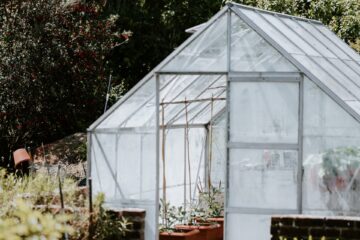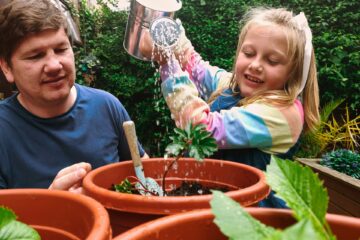You can’t beat homegrown tomatoes – they’re delicious, nutritious and fun to grow. The trickiest part of growing your own tomatoes is knowing how to sow them. So here’s our guide on how to get the best results from your seeds.
Sow tomatoes in seed trays or individual pots.
Sow the seeds in a seed tray or individual pots. Fill the trays or pots with a moist, well-drained compost such as John Innes Seed Compost No. 2 and sow one seed per cell or pot. If using individual pots, plant three to four seeds per pot in case some fail to germinate; this will give you plenty of plants to pick from later on in spring when they are ready for planting out in your garden.
Sow tomato seeds either indoors under cover at any time between December and February depending on where you live (see below), or outdoors once all risk of frost has passed (usually late March/early April).
Place your trays on top of a propagator heated by an electric light bulb inside it; alternatively use an outdoor propagator if you have one available for this purpose – check its instructions before using as some require different temperatures than others do! You could also place them somewhere warm like under lights instead if there is no natural sunlight where they will be growing permanently indoors throughout winter months but bear mind that high temperatures may cause damage if prolonged amounts are experienced over long periods so try not keep them too close together either way!
Use a moist, well-drained seed compost.
When you sow your tomato seeds, the compost should be moist but not wet. The soil should be well-drained and have a pH level of 6 to 7 (6 is slightly acidic and 7 is neutral).
The best type of compost for growing tomatoes is one that’s low in nitrogen and high in potassium–this will give them a good start as they germinate from the seedling stage onwards.
Tomatoes need warmth to germinate, so keep them warm and shaded.
If you’re sowing seeds indoors, use a propagator or cover the pot with a plastic bag. You can also wrap it in newspaper or put it on top of another pot filled with warm water.
Tomatoes need warmth to germinate and grow, so keep them warm and shaded until they germinate (this usually takes about 5-10 days).
As soon as the seedlings show two true leaves, move them into larger pots with fresh compost and plenty of water.
As soon as the seedlings show two true leaves, move them into larger pots with fresh compost and plenty of water.
Watering is important. Do not overwater, but don’t let them dry out either. Keep in mind that watering tomatoes is different from watering other plants: they don’t like their compost to get too wet or too hot or cold–in fact, it should be slightly on the dry side when you’re transplanting them into bigger pots!
Plant out after all risk of frost has passed.
Once you have made sure that all risk of frost has passed and the soil is warm, plant out. If it is not too hot, plant out in the evening, as tomatoes need to be planted in full sun. Tomatoes are heavy feeders so you will need to fertilize them regularly with a fertilizer high in nitrogen (N) and potassium (K).
Plant in good fertile soil in full sun – tomatoes require lots of sunlight! Tip – if you want to grow tomatoes at the back of your garden on a plot that receives less sun you can try growing them under cover.
Tomatoes are a warm-weather plant, so they need to be planted in good fertile soil in full sun. If you want to grow tomatoes at the back of your garden on a plot that receives less sun you can try growing them under cover. Just be careful not to overwater them as the roots will rot if the pot sits in water for too long!
As soon as the seedlings show two true leaves, move them into larger pots with fresh compost and plenty of water – you may need to repot several times before they reach their final position in their outdoor bed or container planter box (around 6 inches deep).
If you follow these tips, when you sow tomatoes they will grow strong and healthy.
Keep on top of your gardening with our free online journal
Our free online tool allows you to organise your ideas and garden plans and help you be as efficient as possible in the garden.
Sign up now

